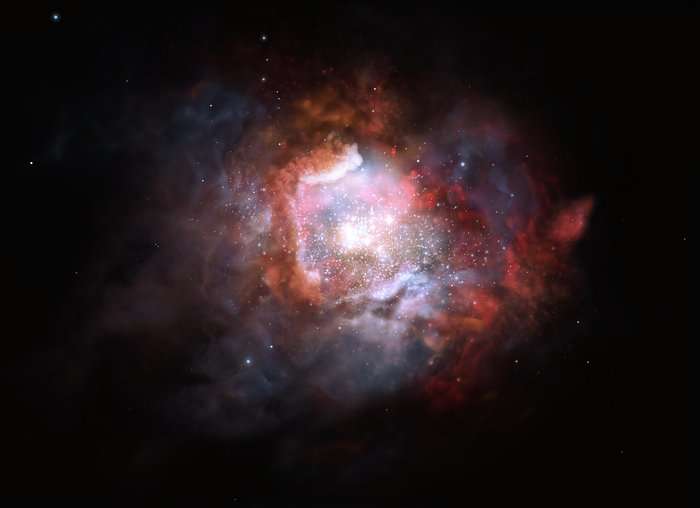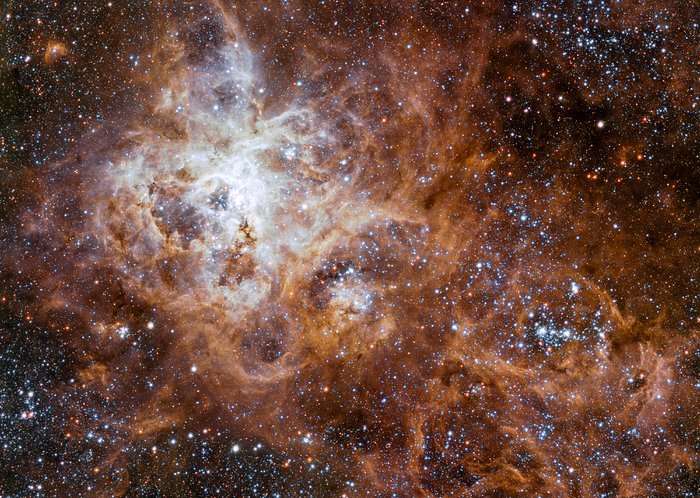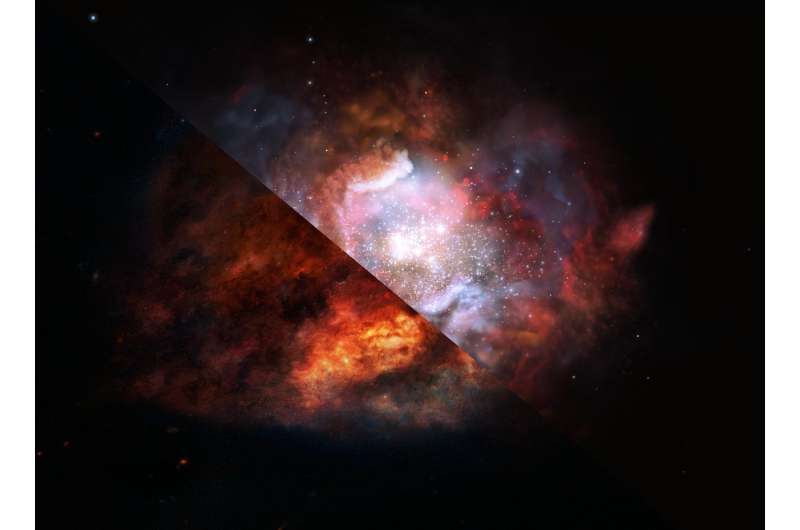Chemical traces from star formation cast light on cosmic history

Fresh insight into how stars are formed is challenging scientists' understanding of the Universe.
A study of intense starbursts—events in distant galaxies in which stars are generated hundreds or thousands of times faster than in our Milky Way—is changing researchers' ideas about cosmic history.
The findings will help scientists understand how galaxies in the early Universe evolve into those we see today.
Instead of observing the optical light from starbursts, which is obscured by enormous quantities of dust, scientists instead observed radio waves, measuring the relative abundances of different types of carbon monoxide gas.
They were able to differentiate between the gas expelled from massive stars, which shine very brilliantly for a short time, and that expelled from less massive stars, like our own Sun, which can shine steadily for billions of years.
Applying this novel technique for the first time, astronomers found that stars born inside galaxies undergoing a powerful starburst tend to be massive. In this regard, these are very different from those born inside galaxies that build up their stars over billions of years.

Scientists verified their findings using powerful computer models based on the evolution of our Milky Way galaxy and by observing starburst galaxies in the early Universe, which formed within a few billion years of the Big Bang. Such young galaxies are unlikely to have undergone previous episodes of star formation, which might otherwise have confused the results.
Researchers collected their data using the powerful ALMA telescope in the high Atacama Desert in Chile.
The five-year study, published in Nature, was carried out by astronomers at the University of Edinburgh and the European Southern Observatory (ESO), working alongside experts in Italy and Greece. It was supported by the European Research Council.
The ALMA telescope is operated by a partnership of the ESO, the US National Science Foundation and the National Institutes of Natural Sciences of Japan, in cooperation with the Republic of Chile.

Dr. Zhi-Yu Zhang, of the University of Edinburgh's School of Physics and Astronomy, who led the study, said: "Traditional telescopes are of limited use when studying dusty starburst galaxies. We reached our results using a powerful new radio telescope, hunting for traces of chemical elements from past events. For astronomers, these are like fossils. The results challenge classical ideas about the formation of stars in galaxies across cosmic time."
Professor Rob Ivison, of the University of Edinburgh's School of Physics and Astronomy and ESO, said: "Our findings lead us to question our understanding of cosmic history. Astronomers building models of the Universe must now go back to the drawing board, with yet more sophistication required."
More information: Zhi-Yu Zhang et al, Stellar populations dominated by massive stars in dusty starburst galaxies across cosmic time, Nature (2018). DOI: 10.1038/s41586-018-0196-x
Journal information: Nature
Provided by University of Edinburgh



















